Rumistan and its structures s just there to rob people blind.
Concerning the non-Greek origin and history of Asia Minor
Collapse
X
-
Concerning the non-Greek origin and history of Asia Minor: Cumans in Asia Minor.
Source -
The Late Byzantine Army: Arms and Society, 1204-1453, by Mark C. Bartusis.
Link to the specific page -
The late Byzantine period was a time characterized by both civil strife and foreign invasion, framed by two cataclysmic events: the fall of Constantinople to the western Europeans in 1204 and again to the Ottoman Turks in 1453. Mark C. Bartusis here opens an extraordinary window on the Byzantine Empire during its last centuries by providing the first comprehensive treatment of the dying empire's military.Although the Byzantine army was highly visible, it was increasingly ineffective in preventing the incursion of western European crusaders into the Aegean, the advance of the Ottoman Turks into Europe, and the slow decline and eventual fall of the thousand-year Byzantine Empire. Using all the available Greek, western European, Slavic, and Turkish sources, Bartusis describes the evolution of the army both as an institution and as an instrument of imperial policy. He considers the army's size, organization, administration, and the varieties of soldiers, and he examines Byzantine feudalism and the army's impact on society and the economy.In its extensive use of soldier companies composed of foreign mercenaries, the Byzantine army had many parallels with those of western Europe; in the final analysis, Bartusis contends, the death of Byzantium was attributable more to a shrinking fiscal base than to any lack of creative military thinking on the part of its leaders.
Summary:
- Around 1239 a large group of Cumans (a Turkic people of the steppes), fleeing before the Mongols, crossed the Danube and invaded Thrace.
- John Vatatzes succeeded in settling most of them in Anatolia throughout the Meander valley and the region east of Philadelphia.
- The Cumans were enrolled in the army and soon afterward received baptism.
- The Cuman reserve light cavalry were settled in Asia Minor.
- 2,000 Cuman light cavalry fought at the battle of Pelagonia in 1259.
- The majority of A. Strategopoulos' 800 troops which retook Constantinople in 1261 were Cuman.
- Michael VIII Palaiologos' European campaigns of 1263-64, 1270-72, and 1275 included large Cuman contingents.
- The Cumans settled by Vatatzes are also encountered in 1292 during Andronikos II Palaiologos's unsuccessful campaign against Epirus. The army was an undisciplined mix of TURKS and CUMANS who terminated the campaign by an unauthorized retreat.Last edited by Carlin; 03-15-2016, 12:08 PM.
Comment
-
-
Concerning the non-Greek origin and history of Asia Minor: Slavs in Asia Minor.
Source -
Byzantium in the Seventh Century: The Transformation of a Culture
By J. F. Haldon.
Link to the specific page [Page 71] -
This book presents the first analytical account in English of major developments within Byzantine culture, society and the state in the crucial formative period from c.610-717. The seventh century saw the final collapse of ancient urban civilization and municipal culture, the rise of Islam, the evolution of patterns of thought and social structure that made imperial iconoclasm possible, and the development of state apparatuses--military, civil and fiscal--typical of the middle Byzantine state. Also, during this period, orthodox Christianity finally became the unquestioned dominant culture and a religious framework of belief (to the exclusion of alternative systems, which were henceforth marginalized or proscribed).
Quote:
- "Most significant for the empire was the transfer of large numbers of Slavs to Asia Minor, in particular to Bithynia and Cappadocia, where they seem to have been eventually drafted into the provincial armies, as a number of lead seals of the officials who dealt with them demonstrate."
Comment
-
-
Concerning the non-Greek origin and history of Asia Minor: Vlachs in Asia Minor.
Source -
Aperçus of the History of Balkan Romanity, by Nicolae-Serban Tanasoca.
Link [Page 119] -
Quote:
- "A source dating back to the end of the Thirteenth Century speaks of bloodshed during a conflict between the Vlachs in the Boleron Theme and imperial revenue agents (Maximos Planudes, in, N.-S. Tanasoca, 1974). According to Georgios Pachymeris, large numbers of well-off Thracian Vlachs in the Fourteenth Century who owned fine houses and many sheep were dispossessed by the Emperor and forcibly moved to Asia Minor in a massive colonization effort motivated by fear of an impending Tartar invasion and anticipation that the Romanians would side with the invaders."Last edited by Carlin; 03-15-2016, 01:25 PM.
Comment
-
-
Link:
In this article, focusing on the situation prevailing in the islands of the Aegean in the Middle Ages, listed unknown and rare testimonies of numerous travelers, which in the timespan of hundreds of years describe many islands as uninhabited, completely deserted.
Large scourges were wars, frequent deadly epidemics and piracy, due to which thousands of residents of the islands dragged as slaves in the bazaars of the East. Population gaps replenished from time to time various groups of people from other places, such as North Africa, the East and in many cases, as we shall see, poor Albanians.
The article is based on excerpts translated from the works of the English historian and archaeologist Frederick William Hasluck (1878-1920): «Depopulation in the Aegean Islands and the Turkish Conquest» (The Annual of the British School at Athens, Vol. 17, 1910 / 1911, pp. 151-181) and «Albanian Settlements in the Aegean islands» (The Annual of the British School at Athens, Vol. 15, 1908/1909, pp. 223-228).
The table below (which I translated from Greek using Google Translate) is a summary of research on desolation and the restocking of the islands in the period before the Cretan War (and, apparently this is historical data only for a period from roughly 14th century to 17th century. What happened in antiquity? What happened in the all the centuries preceding the 14th c.?).

Conclusion from the article:
"… in three similar periods of unrest in the Aegean region there are significant population movements: During the Cretan War (1645-1669), during the Orloff revolt (1770-1774) and the period of '21 (1821-1830).
Yet, until now we thought that the population of the islands has never changed since ancient times and that even the dialects are directly related to ancient dialects.
But historical data can’t be denied that although the islanders boast that they are purebred descendants of the ancient Greeks (though in ancient times the intermarriage was not something unknown), the island populations have undergone significant racial changes even a few centuries ago."Last edited by Carlin; 06-21-2016, 11:47 AM.
Comment
-
-
Greek article:
THE MYTH OF THE CIVILIZATION OF EAST
Some quotes:
- The idea of Hellenization of the East was unthinkable for Alexander. There was no relationship between the Asian campaign and the Greek culture. Clear and undisputed purpose of the invasion was looting. In the texts of ancient historiographers thee are no indications nor hints for civilizing effects of the campaign and "Hellenization of Asia." This fictional ─ figment of younger historians, mainly from the 19th century, serving the ideology of foreign imperialist forces. With the lie all are familiar today.
- Moreover, it is naive to support that thought, that Alexander sat on the Persian throne, caused jubilation and pride to Greeks. False is the claim that Alexander the campaign in Asia, battled for the Greek interests and represented the Greeks. Alexander adopted Asian traditions. He joined the Persian political system wore Persian attire followed a majestic but tyrannical ritual.
- After his death and the tragic outcome of the Lamian War accelerated and completed the sinking of the Greek city-states ─ political, social, economic, cultural. The fierce rivalries successors and wars plunged cities into disasters. Despotism, corruption, persecution, looting, displacement. Their resistance was paralyzed under military violence.
- Alexander Civilizing Asia! And who were his comrades, who avenged the invasion of Xerxes and spread the Greek culture? Triballians, Agrianes, Illyrians, Thracians, Odryssians, Paionians.
Comment
-
-
Are Karamanlides in part of Slavic origins?
Малоазийските българи преди век са твърдели, че караманлиите са потурчени българи => Nearly a century ago, the Asia Minor Bulgarians claimed that the Karamanlides were Turkified Bulgarians.
The Anatolian Bulgarians or Bulgarians of Asia Minor
The existence of Bulgarian villages in Anatolia was noted by western travellers such as the Italian Dr Salvatori (1807), the Frenchman J.M. Tancoigne and the Briton George Keppel (1829). Tancoigne describes his experience in Kız-Dervent (located farther east, between İzmit and İznik) as follows:
"We were pleasantly surprised by finding in that village women who would walk with their faces uncovered, and men whose manners contradicted the Asian ones entirely. We also discovered dresses of the residents of the Danube's banks and heard a Slavic language in an area where we would regard it as absolutely foreign ... The locals told us they were of Bulgarian origin and their village had been founded almost a century ago by their fathers ... The residents of that village are Christians, Eastern Orthodox."
Karamanlides
According to the third theory held by the Turkish author Necip Asım and Bulgarian authors the Karamanlides may be descendants of exiled Slavic-speaking Bulgarians after the conquest of the First Bulgarian Empire by the Byzantine Empire, who were concentrated around the mountain with the survived name Bulgar Dagh. This event was mentioned by the Armenian historian Aristakes Lastivertsi in 1072, who described the event as a disaster and horror for the places where Bulgarians passed. The territory was conquered by the Seljuk Turks first during the Battle of Manzikert. The author Necip Asım provided more than 150 historical accounts (written as late as 1517) literally speaking of Bulgarian Asker, Eller, Beylers, Beys, their rulers Yahsha Khan, Aydin Bey, Vizier Assen and Queen Catherine, who were Christian allies or vassals of the Karamanids or Seljuks.
Bulgarians in Anatolia
According to Hodja Dehani, when the ancestors of the Karamans came to Asia Minor from Shirvan and settled in the southern part of the peninsula around 1217-1228 AD, they found the Bulgarians in and around the Bulgarian Mountains and even for a year they fought with them. After that, the Karamans and Bulgarians joined as allies, and perhaps also enter in vassal relations and carried out joint military activities continuously from the 13th century until the first quarter of the XVI century. Nearly a century ago, the Asia Minor Bulgarians claimed that the Karamanlides were Turkified Bulgarians.
Comment
-
-
The author Necip Asım provided more than 150 historical accounts.
Translation from Bulgarian, from an online excerpt regarding Asia Minor Bulgarians:
Necip Asım provides the Arabic text, which he added later to the expanded Turkish version of "The History of Karaman".
A branch of the Bulgarian tribe, who from the time of the Seljuk and Karamans, after the Mongolians (hence after 1243 AD), lived in the area of Beychehir in the endless Erenkollof mountain. Towards the end of the 15th and the beginning of the 16th century these Bulgarians chose for their queen a maiden named Katerina, who had 10,000 armed people.
When the Karamans, threatened by the Ottomans, retreated to the Bulgarian Mountains, the peasants from the borders of Konya to the borders of Beychehir remained under the authority of Katerina.
The Bulgarians of Katerina and herself were overthrown by the army of Selim before his march to Egypt and Arabia.
Particularly valuable are the notes of Necip Asım in the second half of the article on the language, religion and origin of these Bulgarians. He noted that "it may reasonably be thought that the Orthodox who are now in those places (from Beychehir to Konya) and speak Turkish, are the remains of those Bulgarians.
Asım highlights something very important, which is not written by other investigators, nor is it clear from the Karaman History, except for the name of the Queen of the Bulgarians from Beychehir to Konya, Katerina, in the annex to the extended Turkish version of the chronicle, which speaks of Christian origin: the language of these Bulgarians is Slavic, and their religion is Christian. This shows that they are from Balkan Bulgarians.
Asım affirms that the documents in his possession indicate that these Bulgarians (from Beychehir to Konya) and the Bulgarians in Tash or (around the Bulgarian Mountains) have been here since Seljuk times (probably as early as the 11th century), and that it is written that in the Seljuk army there were Bulgarians and Levantines - Europeans, born in the east.
Also, sources for the 12th century recorded Slavic and Bulgarian presence in Asia Minor. In the chronicle of Abu Mansur al-Hazini, "The remarkable days of the Seljuk State," in a chronicle note for Sanjar, ruled from 1117 to 1157, are explicitly mentioned "Slavic regions Suvar, Bulgar and Ankara ..." (quote from Tatarli, 1982).
Comment
-
-
Population Movements and Demography in the Aegean (Modern Period)
Author(s) : Karachristos Ioannis (2/20/2006)
Translation : Dovletis Onoufrios (7/17/2006)
For citation: Karachristos Ioannis, "Population Movements and Demography in the Aegean (Modern Period)", 2006,
Encyclopaedia of the Hellenic World, Asia Minor
URL: <http://www.ehw.gr/l.aspx?id=10496>
1) Population movements in the Aegean during later times were affected in a positive or negative way by a chain of factors that came up throughout this period.
To begin with, these are factors pertinent more or less to the forces of nature (e.g. epidemics, natural disasters). Certified poor nutrition combined with rather low standards of hygiene and little knowledge of medicine made populations more vulnerable to diseases. Especially in the Aegean, the fact that islands were on trade paths must also be counted in, because that means they were unprotected since they lacked relative seclusion in contrast with some rural regions. Therefore, the Aegean lied on the road epidemics followed on their way from the East to Western Europe. The following years are those when the Aegean islands were gravely plague-stricken: 1445, 1456-1457, 1522-1524, 1537, 1641, 1678-1679, 1687-1689, 1716, 1741, 1759-1760, 1781-1783, 1787-1789, 1812-1814 – and these are just a few of the more widespread epidemics on islands. The whole list of epidemics that struck –sometimes immensely– certain islands is much longer. Several natural disasters (mostly earthquakes, and Thera and Nisyros’s volcanic eruptions) also inflicted losses.
2) Colonizations
Already since the Frankish Rule period, rulers organized colonizations aiming to increase the population of the places where colonists settled, since achieving political and economical aims was otherwise impossible. Therefore, in 1413, people coming from Tinos and Mykonos colonized scarcely populated Astypalaia. Colonizations sometimes covered needs created by military rivalry. In 1450 and 1493, two groups from Chalki settled on Rhodes in order to overlook the sea area considering the Ottoman threat coming from the Asia Minor coasts opposite the island.
Compulsory movement of populations from several areas of the Ottoman Empire towards recently taken over Constantinople was the best-known example of a colonization organized by central power in order to increase the city’s population (sürgün). Populations from newly taken over Aegean islands (e.g. Thasos, Samothrace, Imbros, Limnos and Lesbos) were also moved towards the capital.
A series of measures aiming to increase population of some Aegean islands were adopted by the Ottoman administration though, which knew that growth of the islands’ sparse population was a necessary condition for its power to be stabilized. That is what happened on Rhodes when was taken over in 1522. The same happened after the battleship of Nafpaktos (1571), as the Ottoman systematically tried to re-colonize Samos, Agios Efstratios and Myconos and increase their population. At the same time, there was a gradual increase of the Northern Sporades and Psara population with others coming from Thessaly and Euboea.
The example of the Arvanites (Albanians that had lived in Greece for some centuries) is the last one of the colonization chapter. In 1402, Arvanites from Attica and Boeotia settled on Euboea after being invited by the island’s Venetian authorities. In 1418 Lord of Ios, Marco Crispo I, moved Arvanites from the Peloponnese to the island so that its up to then uninhabited part would be inhabited. In 1558, Ios was deserted again because of Muslim pirates’ incursions, and another colonization by Arvanites in 1575 was therefore launched again, this time by Ottoman rulers. Arvanites from Attica and the Peloponnese were used at the same time for the colonization of Kea and Kythnos, the Argosaronic gulf islands and finally Samos when the island was re-colonized.
Comment
-
-
Mithridates I Ktistes 281–266 BC - Persian
Ariobarzanes 266 – c. 250 BC - Persian
Mithridates II c. 250 – c. 220 BC - Persian
Mithridates III c. 220 – c. 185 BC - Persian
Pharnaces I c. 185 – c. 170 BC - Persian and Greek
Mithridates IV Philopator Philadephos c. 170 – c. 150 BC - Persian and Greek
Mithridates V Euergetes c. 150 – 120 BC - Persian and Greek
Mithridates VI Eupator 120–63 BC - Persian and Greek
Pharnaces II 63–47 BC - Persian and Greek
Darius of Pontus 39–37 BC - Persian/Iranian and Greek
Arsaces of Pontus 37 BC - Iranian and Greek
LMAO those Greek and Persian intermarriages had me rolling, are those indeed half Greeks or is this an other neo-Greek history trick?
They must've loved each other very much.
Comment
-
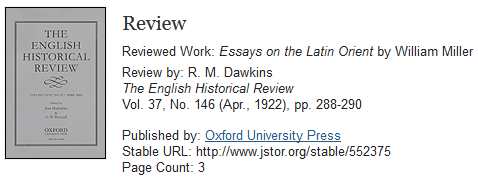
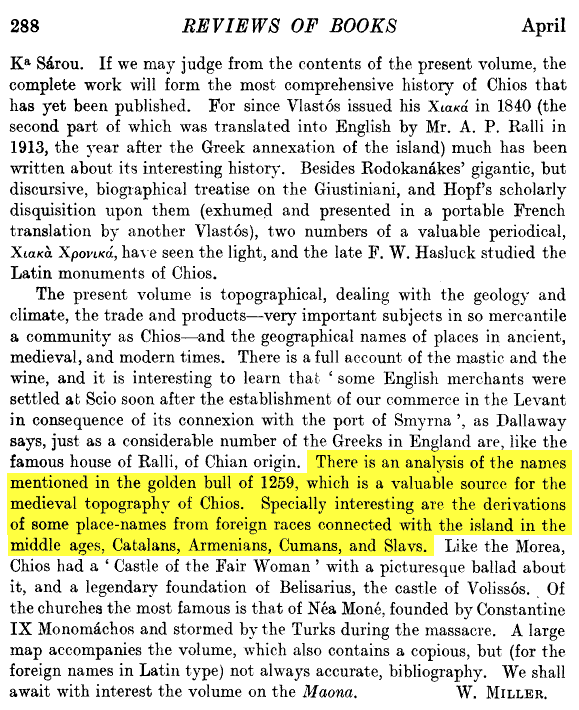
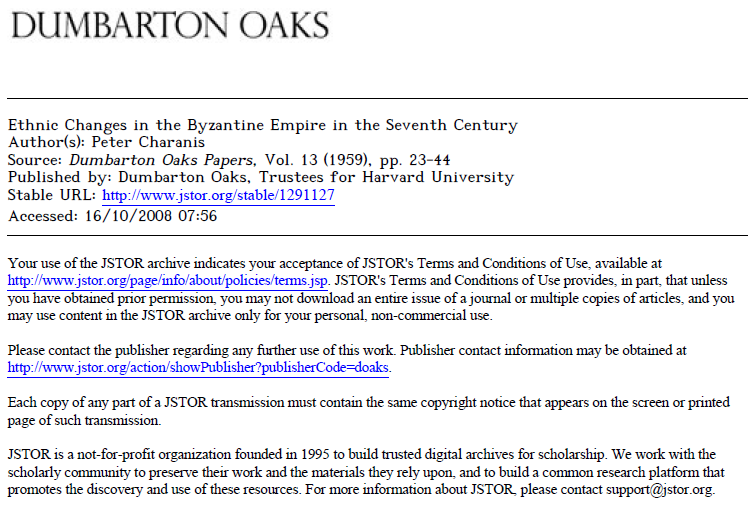
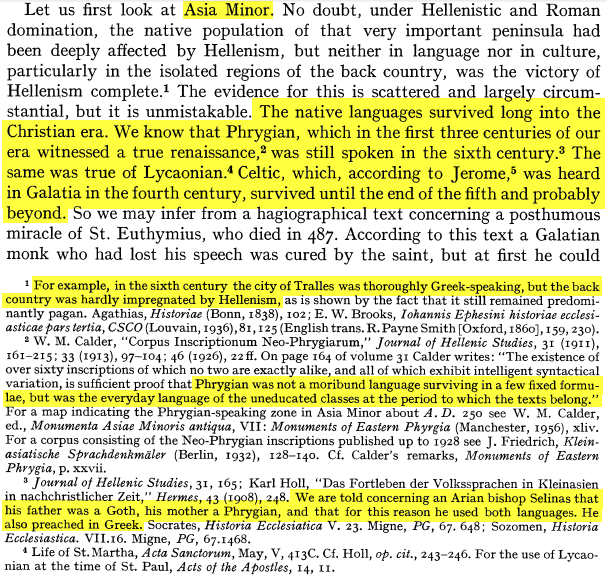
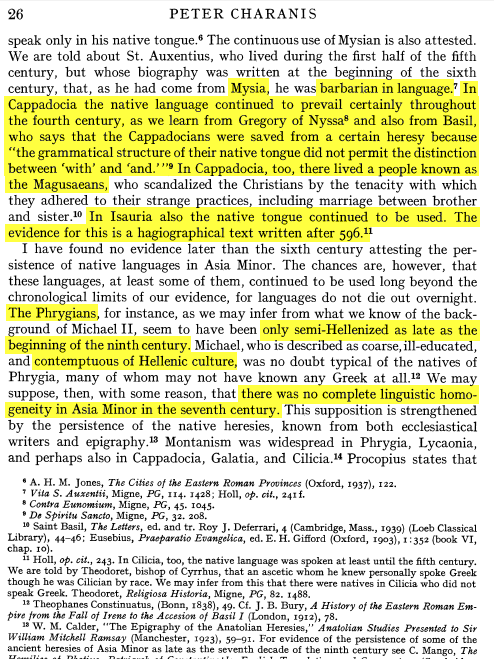


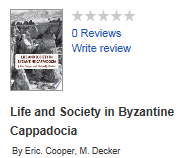
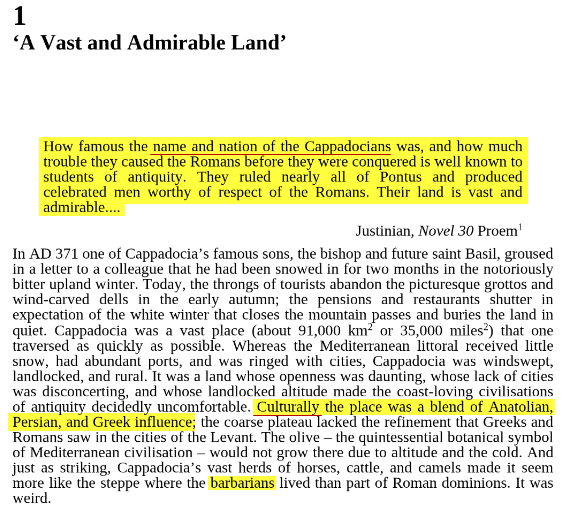


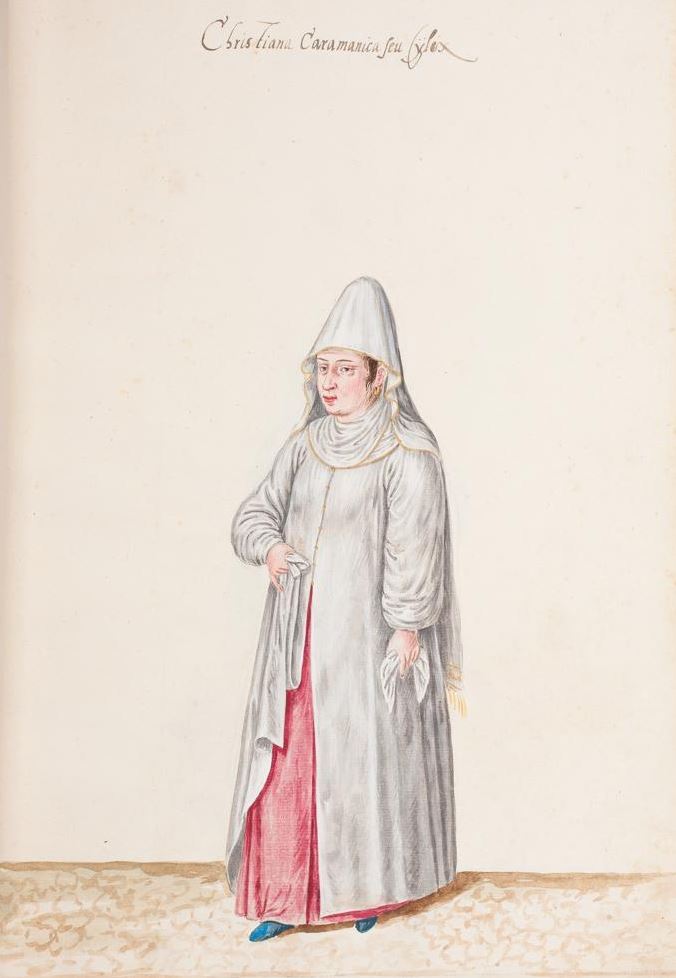

Comment